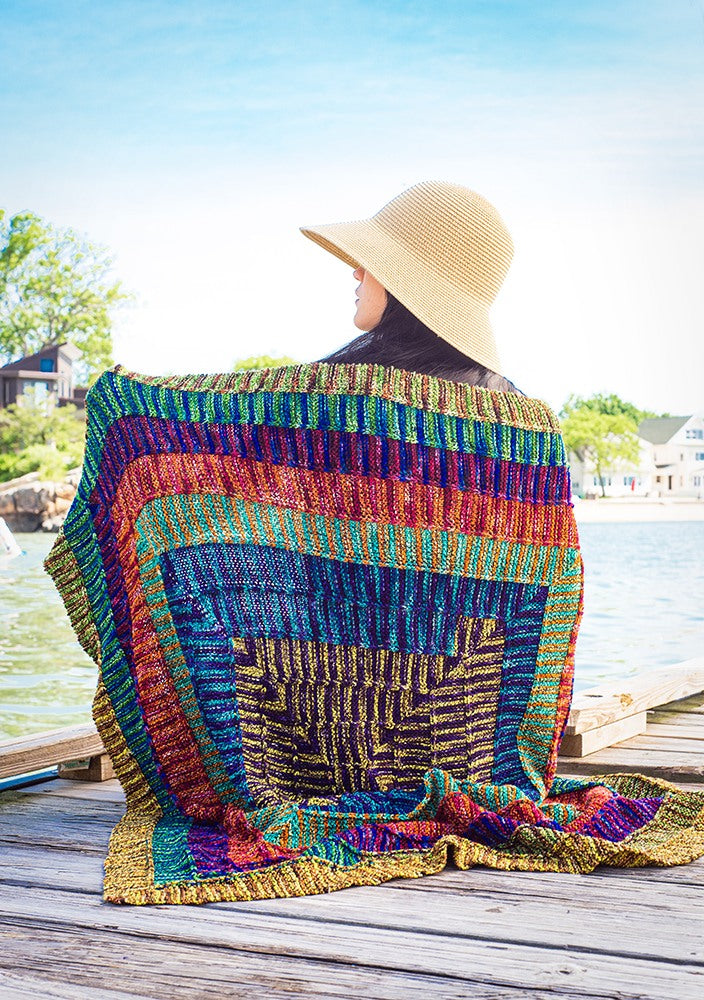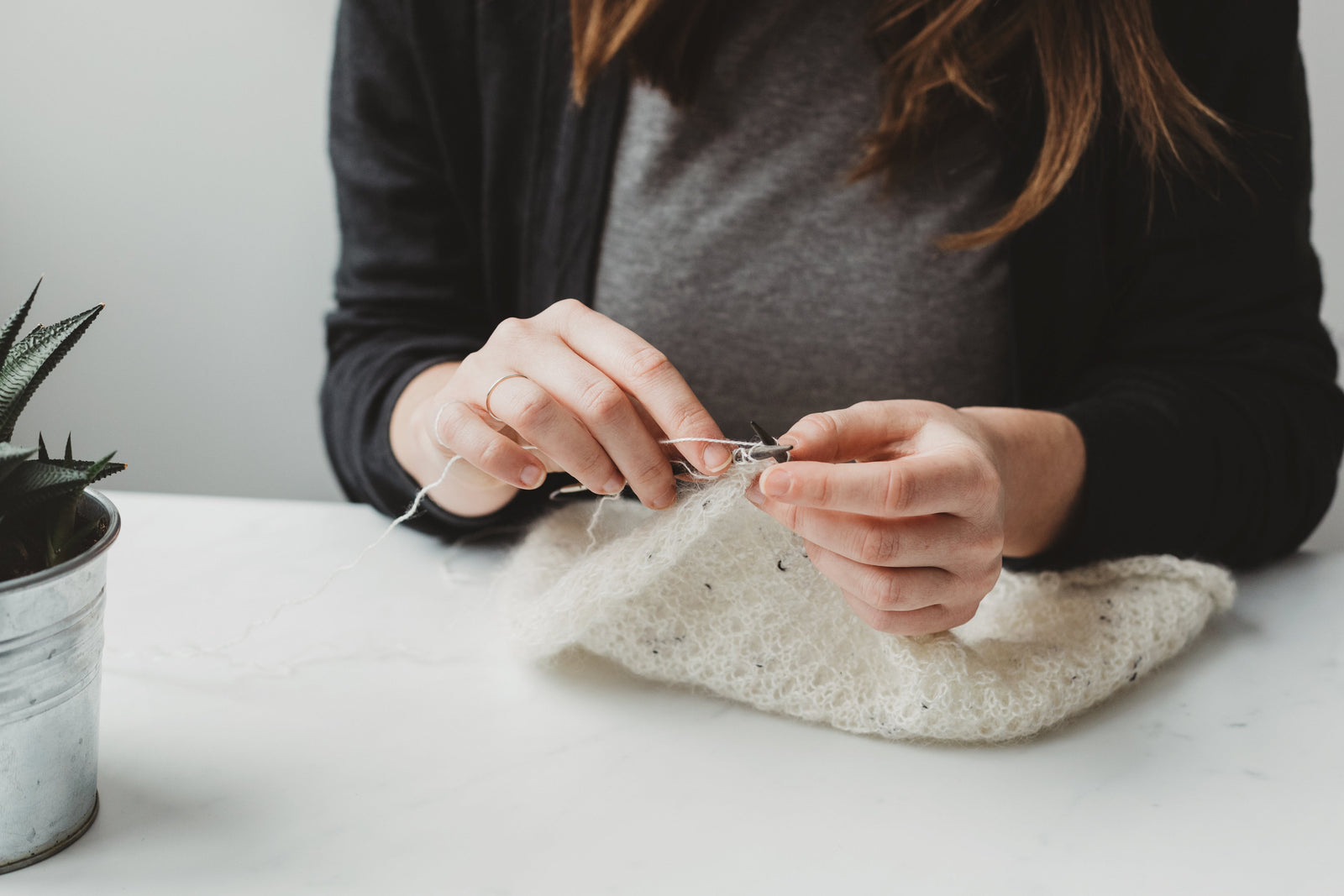Your Cart is Empty
When you spend so much time selecting just the right yarn and pattern, how you finish the resulting project also matters. Today, we'll show you how to master one of the finishing techniques that many knitters dread: the kitchener stitch!
In knitting, there are many ways of joining knit pieces together, which is commonly called seaming or grafting. Kitchener stitch is a way of grafting two pieces of knitting together and creating what becomes an invisible join that blends into the rest of your finished piece.

Kitchener stitch is the perfect finishing technique for a variety of knits. We most commonly see it used for finishing toes in socks, but it can also be used for hoods, baby garments, or anywhere that you don’t want the bulk of a finished seam. Kitchener stitch is typically done with live stitches, but you can also use this method to create invisible seams where you have finished edges as well.
So let’s get into the (k)nitty gritty of kitchener stitch!
Setup: Divide your stitches evenly onto two needles. You can use DPNs or circular needles for this, but the most important thing is that you have the same number of stitches on each needle.
Hold your work so that the wrong sides are together (i.e. you can see the right sides of your work). In stockinette stitch, this means the purl sides are held together, and the knit sides are facing out. With your working yarn, thread a tapestry needle, making sure that you have enough yarn to complete your seam. With socks or small pieces, this will be less than a yard, but in bigger projects you may need more yarn.
NOTE: For this tutorial, we’re using a contrasting yarn so you can easily see the steps in kitchener stitch and what the resulting seam looks like, but normally you would use whatever yarn you’re working with so the seam will disappear.)

Step 1: Insert the threaded tapestry needle into the first stitch on the needle closest to you as if to purl and pull it through,leaving the stitch on the needle.

Step 2: Then insert the needle into the first stitch on the back needle as if to knit, leaving the stitch on the needle. Pull the yarn through.

Step 3: Insert the needle into the first stitch on the front needle as if to knit, while slipping it off the end of the needle.

At this point your work should look like this:

Step 4: Insert the needle into the next stitch on the front needle as if to purl, but this time, leave it on the needle. Gently pull the yarn through.

Step 5: Insert the needle into the first stitch on the back needle as if to purl, and slip it off the end of the needle.

Step 6: Insert the needle into the first stitch on the back needle as if to purl, and slip it off the end of the needle.

Repeat Steps 3-6 until the last two stitches remain on your needle. To remember the sequence in which to kitchener, many knitters chant “knit, purl, purl knit” to remind themselves of the way in which you thread your tapestry needle through the stitches.
As you repeat Steps 3-6, you may need to periodically adjust and tighten up the seam you are creating. This isn’t difficult - just use your tapestry needle to snug up the stitches until they are approximately the same tension as the rest of the knitted piece. Don’t pull too tight or your knitting will pucker around the seam.


Step 7: When you reach the final two stitches, repeat Step 4, and then go to Step 6.
Once you pull the yarn through the final stitch, thread it to the inside/wrong side of your seam, and weave in the end (click here for our free tutorial on weaving in ends). Congratulations - you’ve completed your first kitchener stitch!
We hope this tutorial helps you conquer the kitchener stitch with confidence! If you’re looking for additional information, check out theKnitty tutorial on Kitchener Stitch.
We look forward to seeing what artful projects you create; please share your projects with us using the hashtag #zenyarngarden and follow us on Instagram for more project tips, new releases and tutorials.
Did you find this tutorial helpful? Pin it!




